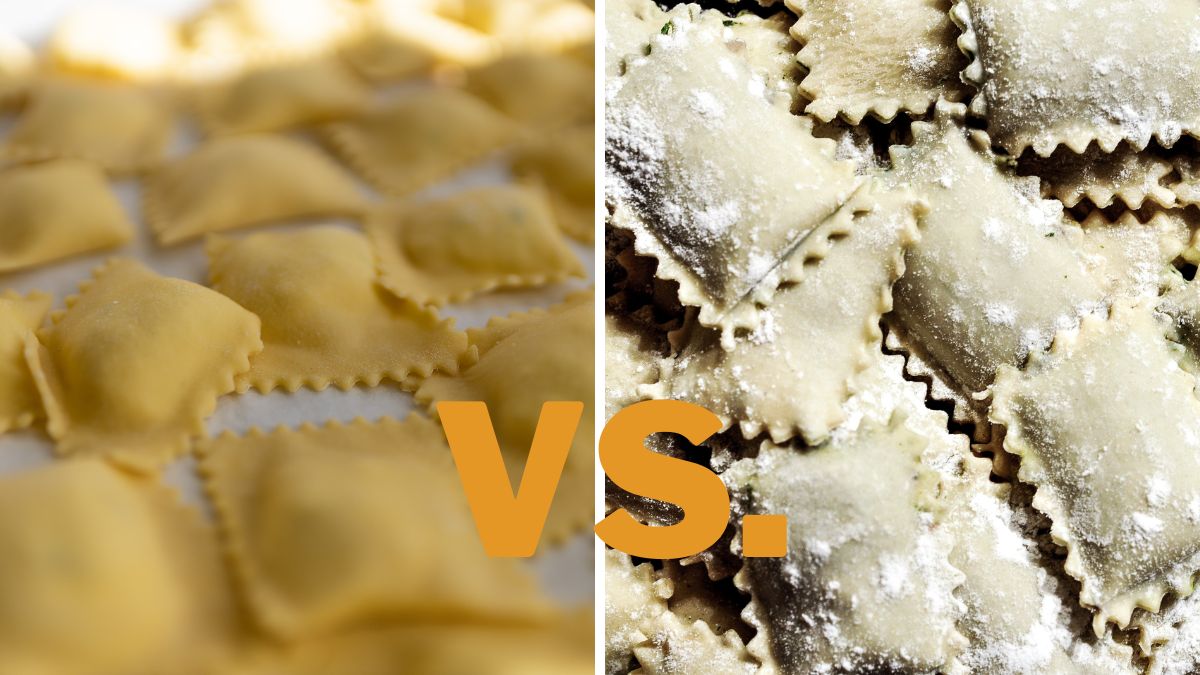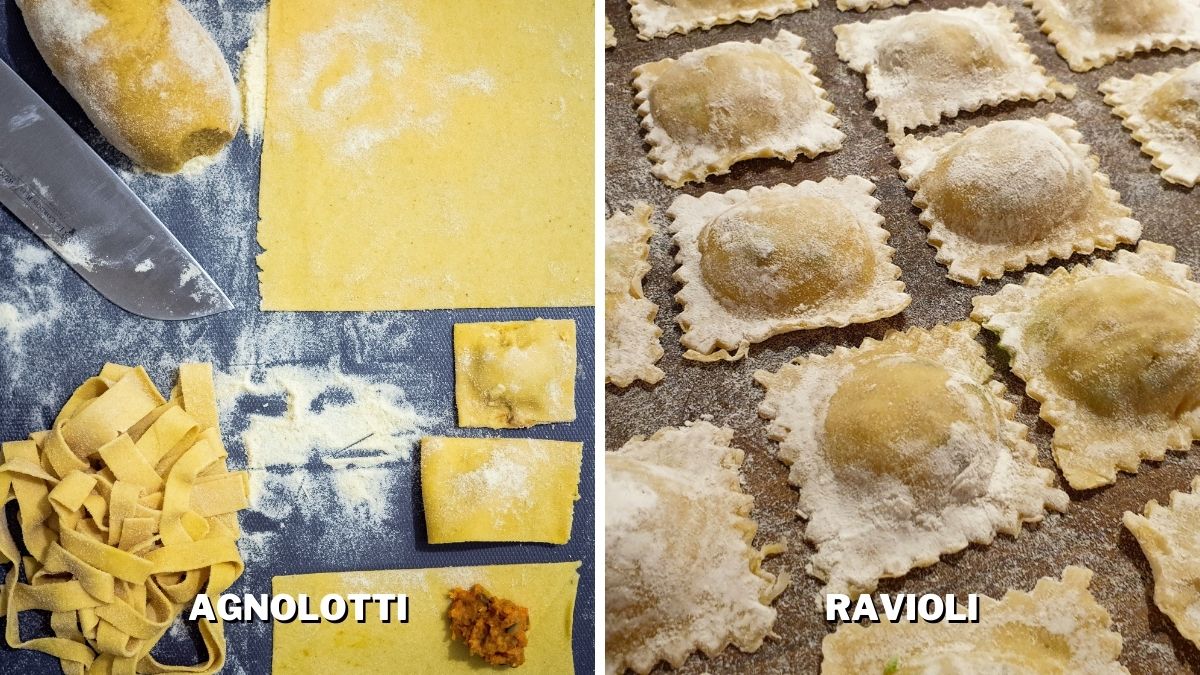Agnolotti vs. Ravioli: Differences & Uses

Ravioli and agnolotti are both Italian delicacies known and loved in Italy and worldwide. They are both very similar in appearance and are often mistaken for one for the other. However, they are undoubtedly two separate types of pasta and so deserve proper appreciation and praise. If you tried them raw, you would immediately notice the difference — but I am the only person I know who actually tastes raw pasta dough. But let’s get back to the topic at hand — what are the differences between agnolotti and ravioli?
Agnolotti is small pasta hot pockets made of folded dough pieces. Ravioli is made of two individual dough pieces pressed together. While the ravioli dough is made with flour and eggs, the agnolotti dough contains flour, eggs, olive oil, and milk. Both are cooked by boiling and served with sauces.
These two delicious pasta varieties have found a place in people’s kitchens and hearts all over the world. Even though they are very similar, they are far from the same. In the following paragraphs, I will tell you all about the differences you need to be aware of to love them properly. Let’s get into it!
Differences in Appearance
Traditionally, agnolotti is small rectangular pasta pockets filled with meat. It is made using one dough piece folded over the filling. Also, even though it often has a rectangular shape, its appearance can vary, as some people also give them a semi-circular shape.
Nevertheless, they always have one smooth edge, the one where the dough is folded, and the rest is pressed to prevent the filling from escaping. The pocked is sealed by hand, using only the maker’s fingertip. Therefore the folded sides have small dimples.
Ravioli pasta looks like square pockets and is traditionally filled with ricotta cheese. However, the filling varies depending on where they are made. Unlike agnolotti, this pasta type is not folded, but consists of two individual pieces of dough pressed onto each other.
Ravioli is traditionally square-shaped but can also be shaped otherwise, depending on the maker. The edges are pressed together with a fork leaving small straight stripes on the dough.

Differences in Dough
Angolotti and ravioli use similar doughs, but they have some crucial differences in this aspect. While you normally make ravioli with traditional pasta dough containing eggs and all-purpose flour, angolotti’s dough also contains milk and olive oil.
Differences in Filling
Ravioli is traditionally filled with ricotta cheese, but it’s also very open to experimentation and improvisation regarding the filling. It can be filled with spinach and cheese, mushrooms and meat, meat and onions, etc. Basically, as long as the dough is the traditional ravioli dough and the method of making is traditional, the filling won’t change the type of pasta.
Agnolotti doesn’t have a traditional filling like ravioli — the filling is a non-issue with this pasta type. It has a less standardized filling, but is often filled with minced or ground meat. I love to fill it with my favorite ingredients, and I can do so because the dough is very adaptable to various flavors.
Differences in Preparation
Both pasta kinds are cooked the same way but have different preparation processes. To make agnolotti, you cut the dough before adding the filling. Each piece of dough is gently rolled with a rolling pin to make it smoother and flatter. Each piece of dough has a filling on it and is then folded over the filling and finger-sealed.
Ravioli goes through a slightly different preparation process. There are two individual stripes of dough, one of which holds the filling, and the other that covers it. Once you place both dough stripes where they should be, then you gently roll the top stripe with a ravioli rolling pin.
The rolling is optional, but it is frequently done to remove excess air from the ravioli pocket. The next step is cutting it into individual pieces and sealing the edges by pressing them with a fork.
Once done, you cook them both the same way, i.e., by boiling them. The water needs to contain a bit of salt and boil before adding the pasta. The cooking takes about four to five minutes, after which you need to carefully take it out of the water and place it on a dry towel to dry.
This way, you can combine your ravioli or agnolotti with different sauces or broths.
Differences in Taste
When discussing the taste of pasta pockets, we must consider why they are filled. The purpose of having a pasta pocket instead of plain pasta is for the filling to shape the taste. Therefore, both pasta varieties get their flavor from the filling, and each one tastes differently depending on what they have been filled with.
However, they do have their signature flavors due to the standardization of the dough. Plain ravioli tastes just like any pasta would. The same dough can be used for spaghetti, for example, and in itself, ravioli tastes like any sauceless pasta.
Since the agnolotti dough is a bit fattier due to the milk and olive oil, they taste somewhat fuller and slightly richer. Again, its flavor is mostly determined by its filling. The ravioli and agnolotti doughs taste very similar to one another, and the taste would be best described as classic pasta flavor.
Differences in Uses
Both agnolotti and ravioli are used the same way, so they are often mistaken for each other. They go excellent with tomato-based sauces, cream and cheese sauces, pesto, soups or broths, as well as salads.
Differences in Popularity
Although alike and similarly used, ravioli and agnolotti are not as equally popular. Ravioli seem to be the more popular ones, probably due to the fact that they are slightly easier to make. Nevertheless, agnolotti is also popular, but since they are a bit more complicated to make, they seem to lag behind ravioli for just a little bit.
